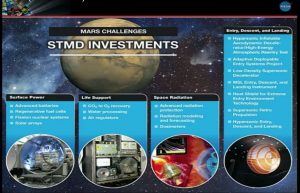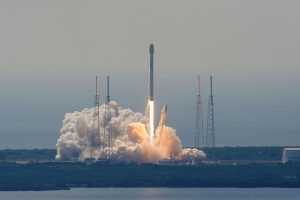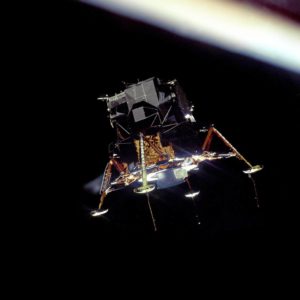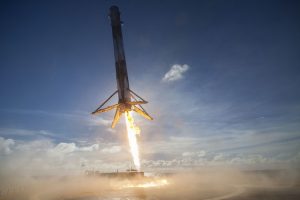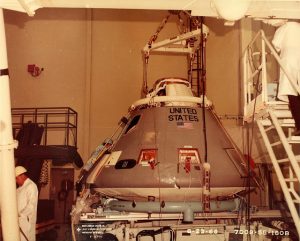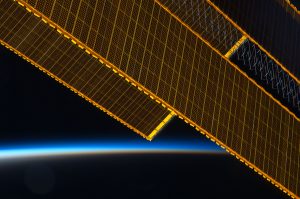SpaceX
There are many challenges involved in a mission to Mars. What are they and what technology is SpaceX working on to address them?
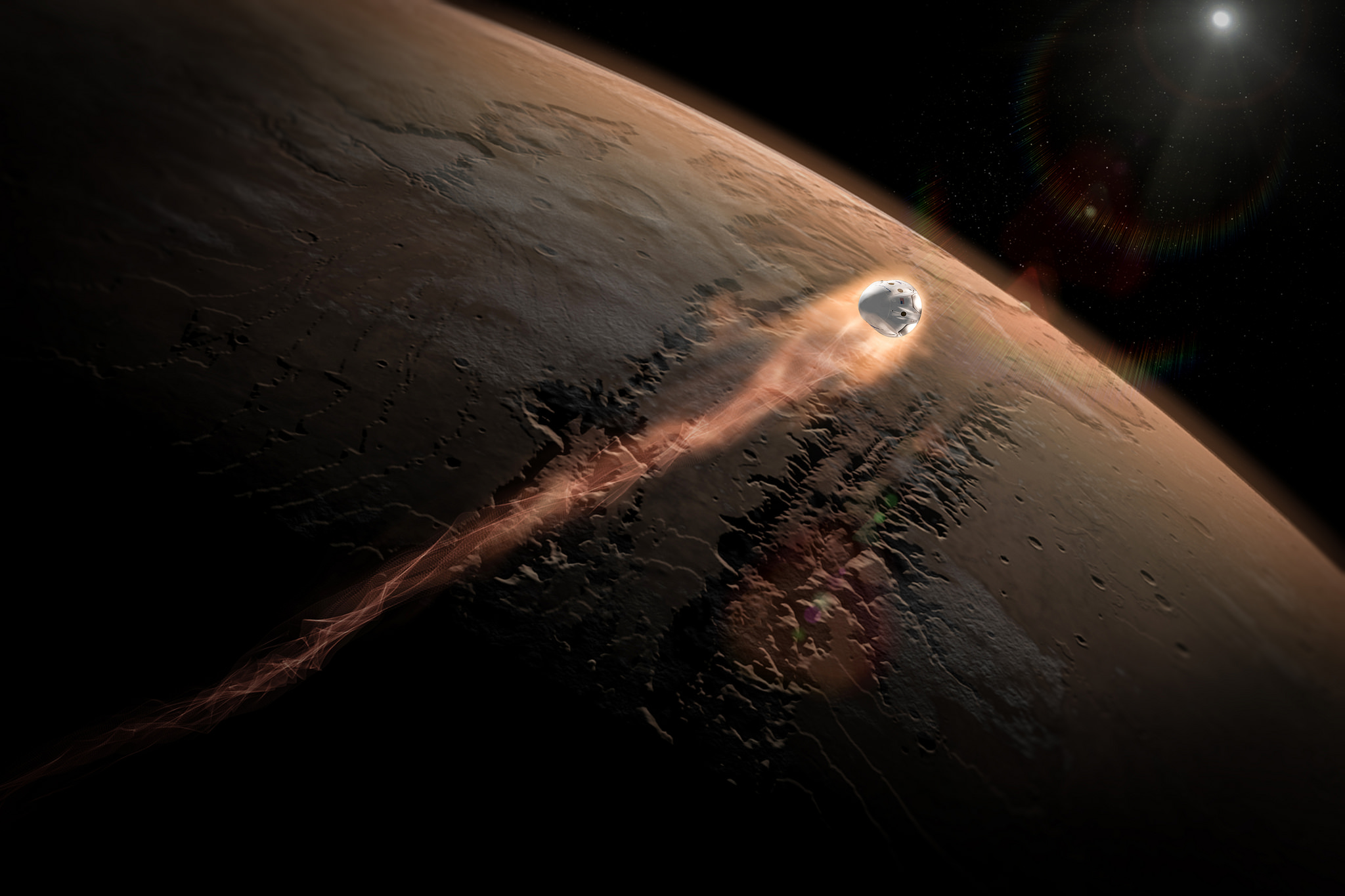
The concept of sending humans to Mars has been an exciting idea for decades, and the direction of space travel in the 21st century is finally presenting the possibility of actually making that happen. Of course, once everyone let the seriousness of such a journey sink in, the question of feasibility has inevitably come to the table for open discussion with the goal of finding realistic solutions.
It’s interesting enough to simply review the missions of all the Mars hopefuls (Part 1), but now that the reviews are in, it’s the details that are driving the discussion. After all, even the casual observer knows that deep space travel presents challenges such as long-term zero gravity and the ever-popular doom-and-gloom danger of cosmic radiation.
[Say that last one in a loud, booming voice for extra effect.]
Before breaking down any specifics, I want to acknowledge that there’s more than just a twelve-step program to getting to Mars (twelve being the obligatory “go-to” number). It requires an entire infrastructure of capabilities that build upon and support one another. However, I’m taking a leap of faith by assuming that inevitably anyone making a successful trip to Mars will have partnerships in place to tap into such an infrastructure. It’s the larger components of the specific missions that I’m focusing on here.
Outlining the Challenges for a Mission to Mars
NASA has a dedicated “Space Technology Mission Directorate” (STMD) charged with developing the capabilities needed to achieve the missions and goals NASA is given.
With the red planet as one of the big missions of the day (meaning Mars obviously, although Pluto has also been determined to be red), there’s no shortage of PowerPoints, panels, and interviews to source for what’s being worked on. I’ll follow their lead for discussion.
Transportation
First and foremost, in order to explore Mars, we’ve got to get there and (arguably) back. Depending on the length of stay and mission purpose, the cargo needs are going to play a part in the “how” part of this puzzle piece. Small stuff, no sweat (relative to general space traveler sweat levels). Big stuff? Now we’ve got issues.
Propulsion
Propulsion has been an interesting discussion to watch from the sidelines, mainly due to the debate over the types of systems available versus the types of systems thought to be needed. General mission discussions tend towards a six to eight month flight time each way plus a year and a half or so on the surface, but there are those advocating for shorter flight times to mitigate hazard exposure and reduce cargo needs.
Current rocket fuels can speed things along, but only at the expense of high fuel consumption. Nuclear fusion (and fission) systems are in the works which would theoretically reduce the flight time to Mars to approximately three months, but the timeframe needed to fully develop and test such new technologies isn’t a big crowd pleaser.
The methane-based nature of SpaceX’s Raptor engine for their speculated Mars Colonial Transport doesn’t really lend either way to this debate because using methane is a choice surrounding resource availability rather than power levels. Since methane can be harvested and manufactured on Mars, it reduces the need to carry as much fuel from Earth on missions, thus lowering costs. Methane-based fuel generation is also one of the key parts of the Mars Society’s “Mars Direct” proposal.
Entry, Descent, and Landing
Given the fact that we’ve sent several rovers to Mars already, it might be surprising that getting a craft from orbit to the Martian surface is actually a huge challenge. A quick survey of our recent history certainly makes the case for landing to be a non-issue, so what’s the deal?
Yes, we land heavy things on Earth all the time, but we do so with an atmosphere about 99% thicker than the one on Mars. The lack of air pressure and wind on Mars means that there isn’t any real air resistance to aid in slowing down a massive descending craft nor is there any wind to tap into for a glider or parachute to be very effective.
What about the moon?
There’s virtually no atmosphere there, either, yet we landed quite a bit of cargo during the Apollo program. That explanation would be gravity. The moon has less than half the gravity that Mars does, which is less than 20% that of Earth. The difference in power required to land a crew module on the moon vs. Mars could maybe be compared to landing a mini Falcon 9 with a micro drone onto a piece of plywood in the middle of a swimming pool versus dropping, say, a child-sized Tesla Model S. Maybe not, but it’s fun to think about. So cute…
In 2012, NASA landed the rover “Curiosity” on the Martian surface using a very complicated parachute-plus-propulsion crane system. The existence of such technology somewhat gives the impression that landing things on Mars is already a solved problem. If what we’re landing is about the mass of a small car, this impression is true, but if we are landing anything significantly larger, such as a capsule carrying humans for example, then the problem is still a problem as larger masses require greater counterforce to slow down their descent.
SpaceX Gives Back
SpaceX’s focus on developing propulsive landing systems is aiming to solve the problem of counterforce. This is actually an area where SpaceX is supporting NASA’s Journey to Mars (instead of the other way around) via the data obtained from their Falcon 9 landings to date. One of NASA’s proposed solutions is a “supersonic retropropulsion” system, meaning periodic firing of the engines on a craft to counter the speed resulting from a trip through the (small) Martian atmosphere. To date, NASA hasn’t been able to test this type of technology in an environment similar to what would be encountered on Mars whereas SpaceX has. By studying the results of SpaceX’s Falcon 9 first stage landings, NASA can use the information gathered for their retropropulsive system designs.
Back scratchers, unite!
Crew Systems
The crew ships under development for taking astronauts to Mars have a number of requirements to meet to be successful transports, and from the information available thus far, their progress seems to be moving along swimmingly. SpaceX’s Crew Dragon has been announced with photos and basic details provided, and NASA’s Orion capsule has enjoyed a marketing campaign providing numerous details for quite some time now.
The primary improvements in both capsule designs over the Apollo age seem to be more room, better heat shields, better software, and glass cockpits (i.e., touch screens). Crew Dragon can also hover (eventually landing) and blast off from its rocket transport in an emergency event. The aesthetics are pretty swank as well. Why isn’t there anything vastly different from what we’ve already done?
If it ain’t broke, don’t fix it.
Crew Cargo & Environmental Systems
Environmental systems and supplies to keep human travelers alive and (mostly) happy have been generally worked out via prior orbital missions, especially on the long-term International Space Station (ISS) ones. However, there are a few added “catches” that a mission to Mars throws in.
First, the ISS is able to maintain long-term human crews due to regular cargo resupply missions. The travel distance for Mars-bound astronauts will render such types of delivery schedules unavailable. No cargo deliveries mean carrying all the cargo required for the entire trip, something that generally demands multiple rocket launches for supply assembly before heading out.
Other than the higher expense of multiple launches, this seems to just be a matter of logistics and cost effectiveness rather than capability. SpaceX’s Falcon Heavy was certainly designed with these cargo requirements in mind considering the power packed into its engines.
Second, life support system technology has been developed and advanced over the years on the ISS, but it requires a lot of maintenance to upkeep. Perhaps the life support systems on the new crew capsules will endure for longer than the systems on the ISS as they have the data available to design around, but in the event that upkeep is just a fact of life that can’t be prevented, crews will surely undergo the training to perform repairs as needed as they are now.
As development in the space industry continues, these issues may become minimal. For instance, short-term resupply missions could eventually become available as travel time to Mars decreases with more efficient and powerful propulsion systems. The development of photon propulsion via lasers is ongoing, the goal being to accelerate around 220 pounds of unmanned spacecraft to 25% the speed of light for a three-day trip to Mars. That could almost translate into a sort of Mars-based Amazon Prime. I see what you’re up to, Jeff Bezos!
SpaceX also plans on making regular cargo missions to Mars a bi-annual affair, so as long as supplies and equipment can last for the 26-month(ish) window between launches, it’s Mars-certified.
Zero Gravity Impacts
When astronauts return from long-term zero gravity, their bodies have to acclimate after changes despite attempts to mitigate the effects through exercise regimens. If you’re just going from Earth to space and then Earth again, no big deal really. But going from Earth to space and then Mars? There won’t be a team of medical professionals ready to drag the astronauts out of the capsule and tell them to take it easy for a while.
That’s kind of an amusing image, actually. The Red Dragon capsule lands but everyone inside is all laid out looking like they are badly hungover from the prior night’s club hopping. Throw in some glitter for Instagram? Sorry, I’m digressing…
What exactly are the effects of long-term zero gravity on the human body? According to NASA, muscles (including the heart) can atrophy at a rate of 5% per week, bones at 1% per month, and about 22% of blood volume is lost. These are generally recoverable, but it takes about as long to recover a muscle as it did to lose it, and bone can take two to three years to grow back if it does at all. The lower Mars gravity would probably mean an easier recovery process, but there’s still a process involved and the entire crew is affected. Not even regular exercise can mimic all of the (needed) effects that gravity has on the body.
The concept of using a rotating space craft to mitigate this problem is seen so often in movies and space habitat designs that one might think it’s a “given” that some version of it will be used for Mars travel. In fact, The Mars Society’s “Mars Direct” plan even advocates for a rotating craft which uses the spent upper stage of the rocket as an anchor to spin the crew capsule around for artificial gravity simulation.
Since nothing looked like it would “spin” on the Dragon and Falcon Heavy media releases nor did there seem to be much room for a treadmill, I was really curious about what SpaceX’s answer to long term zero gravity was. From what I’ve read, it isn’t seen as a real problem or “show stopper”, if you will. Again, I’m missing a direct source to cite for any Elon or SpaceX comment on the issue, but from commentary around the web, it seems that the issue has surfaced in public discussions with no particular technology addressed to overcome it.
Perhaps this is one more thing we will see come September when SpaceX’s Mars Colonial Transporter plans are revealed. I can’t imagine that one hundred body-worn, space-traveling colonists wouldn’t be a problem needing to be addressed.
Surface Power
When it comes to any sort of space travel, solar seems to be one of the “go to” choices for power sourcing outside of propulsion. Unfortunately, when it comes to Mars exploration, solar power alone may not be enough. For one thing, Mars receives less than half the sunlight that Earth does, and most of that sunlight is only available in certain regions of the planet such as around the equator. Frequent light-blocking dust storms are also a problem. NASA’s STMD has outlined advanced batteries, regenerative fuel cells, fission nuclear systems, and solar arrays as the choice technologies for development in the area of surface power.
Now, I admit that I don’t have all the time in the world to watch every Elon Musk video in existence (although I do enjoy the convenience of a YouTube channel with nearly all of them compiled), but I haven’t had much luck finding original sources of either Elon or a SpaceX executive directly commenting on the subject of surface power. I’m sure something is out there either eluding me or that I’ve forgotten I’ve seen.
Crew Dragon uses solar arrays attached to its trunk during flight for power, but the trunk is jettisoned prior to reentry (or entry when talking about Mars). I could make an educated guess based on the connections between Elon Musk and Solar City, Tesla, and the methane-based Raptor engines to presuppose that solar power, advanced batteries, and methane fuel generation are part of SpaceX’s surface power plans, but in the end it’s just a guess. Also, if Raptor is using a methane-based fuel because it can be resourced outside of Earth, I’d imagine that surface power would tie into that same manufacturing capability.
Mars One plans to utilize solar power for its surface power needs, specifically “thin film solar photovoltaic panels”. There isn’t much detail about their required panel size available, only that they should have the ability to be rolled up and transported elsewhere if need be. Finally, as I mentioned previously, the “Mars Direct” plan advocates tapping into fuel generation structures that manufactures a Methane-Oxygen bi-propellant.
Overall, it seems everyone is likely on a similar page regarding power sources – nothing crazy or unheard of, unless you think nuclear anything is too risky.
Coming Up on Countdown to Mars…

Wernher von Braun and Walt Disney | Credit: NASA on The Commons
Cosmic space radiation! There’s so much on this topic, it’s worth an entire piece on its own. Spoiler alert: Elon doesn’t seem to be worried about that issue. Why not?
Also, stay tuned for a (theoretical) discussion on future Martian government…
Did you know that Werner von Braun had a fictional tale of a Martian society wherein the elected Martian leader was called “The Elon”? It’s almost as though he really did take a trip on that Nazi time traveling bell thing…

Investor's Corner
SpaceX IPO is coming, CEO Elon Musk confirms
However, it appears Musk is ready for SpaceX to go public, as Ars Technica Senior Space Editor Eric Berger wrote an op-ed that indicated he thought SpaceX would go public soon. Musk replied, basically confirming it.

Elon Musk confirmed through a post on X that a SpaceX initial public offering (IPO) is on the way after hinting at it several times earlier this year.
It also comes one day after Bloomberg reported that SpaceX was aiming for a valuation of $1.5 trillion, adding that it wanted to raise $30 billion.
Musk has been transparent for most of the year that he wanted to try to figure out a way to get Tesla shareholders to invest in SpaceX, giving them access to the stock.
He has also recognized the issues of having a public stock, like litigation exposure, quarterly reporting pressures, and other inconveniences.
However, it appears Musk is ready for SpaceX to go public, as Ars Technica Senior Space Editor Eric Berger wrote an op-ed that indicated he thought SpaceX would go public soon.
Musk replied, basically confirming it:
As usual, Eric is accurate
— Elon Musk (@elonmusk) December 10, 2025
Berger believes the IPO would help support the need for $30 billion or more in capital needed to fund AI integration projects, such as space-based data centers and lunar satellite factories. Musk confirmed recently that SpaceX “will be doing” data centers in orbit.
AI appears to be a “key part” of SpaceX getting to Musk, Berger also wrote. When writing about whether or not Optimus is a viable project and product for the company, he says that none of that matters. Musk thinks it is, and that’s all that matters.
It seems like Musk has certainly mulled something this big for a very long time, and the idea of taking SpaceX public is not just likely; it is necessary for the company to get to Mars.
The details of when SpaceX will finally hit that public status are not known. Many of the reports that came out over the past few days indicate it would happen in 2026, so sooner rather than later.
But there are a lot of things on Musk’s plate early next year, especially with Cybercab production, the potential launch of Unsupervised Full Self-Driving, and the Roadster unveiling, all planned for Q1.
News
SpaceX reportedly mulling IPO, eyeing largest of all time: report
“I do want to try to figure out some way for Tesla shareholders to participate in SpaceX. I’ve been giving a lot of thought to how to give people access to SpaceX stock,” Musk said.
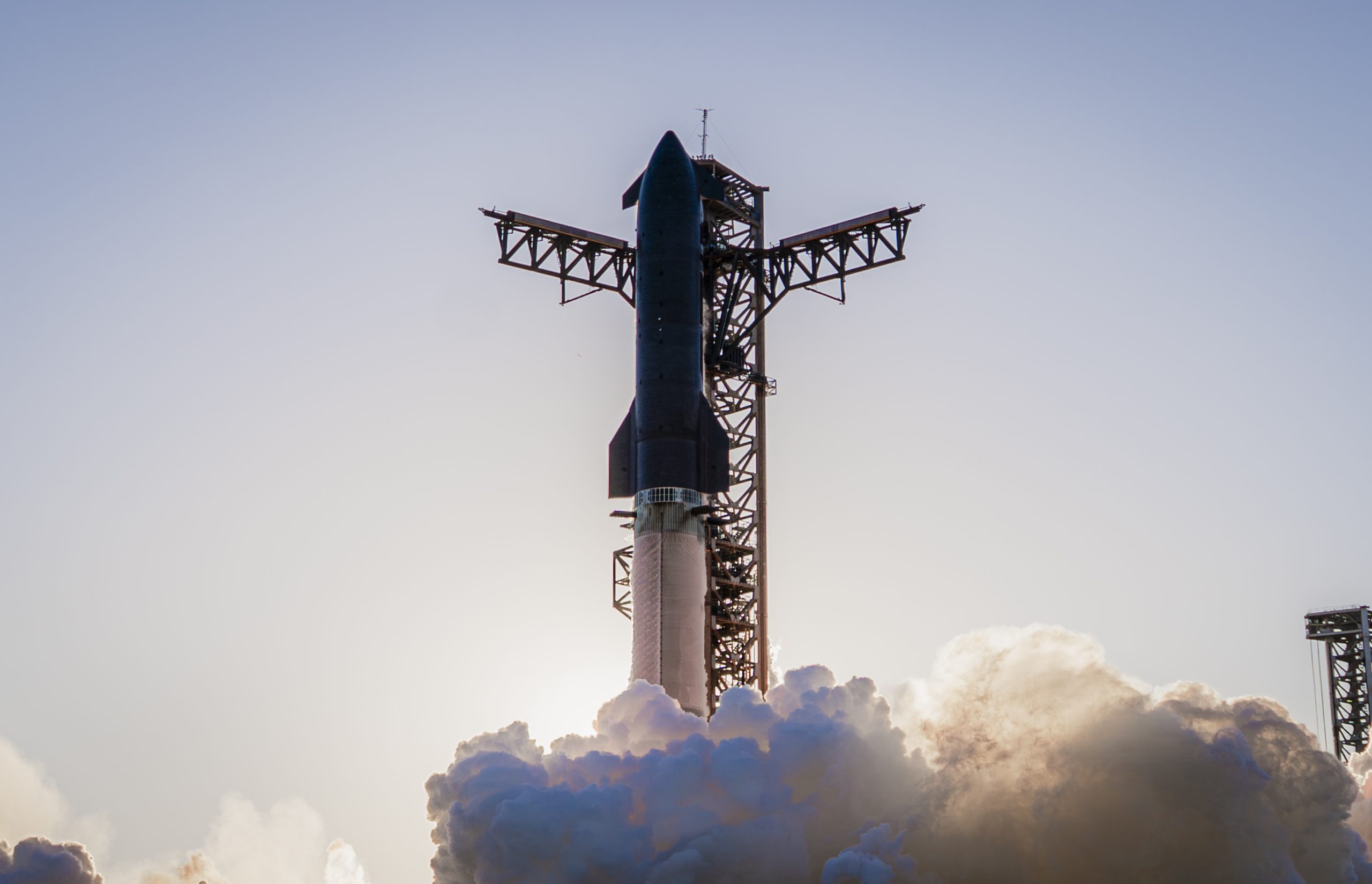
SpaceX is reportedly mulling an initial public offering, eyeing what would be the largest valuation at the time of availability of all time, a new report from Bloomberg said on Tuesday.
It is one of many reports involving one of Elon Musk’s companies and a massive market move, as this is not the first time we have seen reports of an IPO by SpaceX. Musk himself has also dispelled other reports in the past of a similar nature, including an xAI funding round.
SpaceX and Musk have yet to comment on the report. In the past, untrue reports were promptly replied to by the CEO; this has not yet gained any response, which is a good sign in terms of credibility.
However, he said just a few days ago that stories of this nature are inaccurate:
“There has been a lot of press claiming SpaceX is raising money at $800B, which is not accurate. SpaceX has been cash flow positive for many years and does periodic stock buybacks twice a year to provide liquidity for employees and investors. Valuation increments are a function of progress with Starship and Starlink and securing global direct-to-cell spectrum that greatly increases our addressable market. And one other thing that is arguably most significant by far.”
There has been a lot of press claiming @SpaceX is raising money at $800B, which is not accurate.
SpaceX has been cash flow positive for many years and does periodic stock buybacks twice a year to provide liquidity for employees and investors.
Valuation increments are a…
— Elon Musk (@elonmusk) December 6, 2025
Musk has discussed a potential IPO for SpaceX in recent months, as the November 6 shareholder meeting, as he commented on the “downsides” of having a public company, like litigation exposure, quarterly reporting pressures, and other inconveniences.
Nevertheless, Musk has also said he wants there to be a way for Tesla shareholders to get in on the action. At the meeting in early November, he said:
“I do want to try to figure out some way for Tesla shareholders to participate in SpaceX. I’ve been giving a lot of thought to how to give people access to SpaceX stock.”
Additionally, he added:
“Maybe at some point., SpaceX should become a public company despite all the downsides of being public.”
Musk has been historically reluctant to take SpaceX public, at times stating it could become a barrier to colonizing Mars. That does not mean it will not happen.
Bloomberg’s report cites multiple unidentified sources who are familiar with the matter. They indicate to the publication that SpaceX wants to go public in mid-to-late 2026, and it wants to raise $30 billion at a valuation of around $1.5 trillion.
This is not the first time SpaceX has discussed an IPO; we reported on it nine years ago. We hope it is true, as the community has spoken for a long time about having access to SpaceX stock. Legendary investor Ron Baron is one of the lucky few to be a SpaceX investor, and said it, along with Tesla, is a “lifetime investment.”
Tesla bull Ron Baron reveals $100M SpaceX investment, sees 3-5x return on TSLA
The primary driver of SpaceX’s value is Starlink, the company’s satellite internet service. Starlink contributes 60-70 percent of SpaceX’s revenue, meaning it is the primary value engine. Launch services, like Falcon 9 contracts, and the development of Starship, also play supporting roles.
News
SpaceX reaches incredible milestone with Starlink program
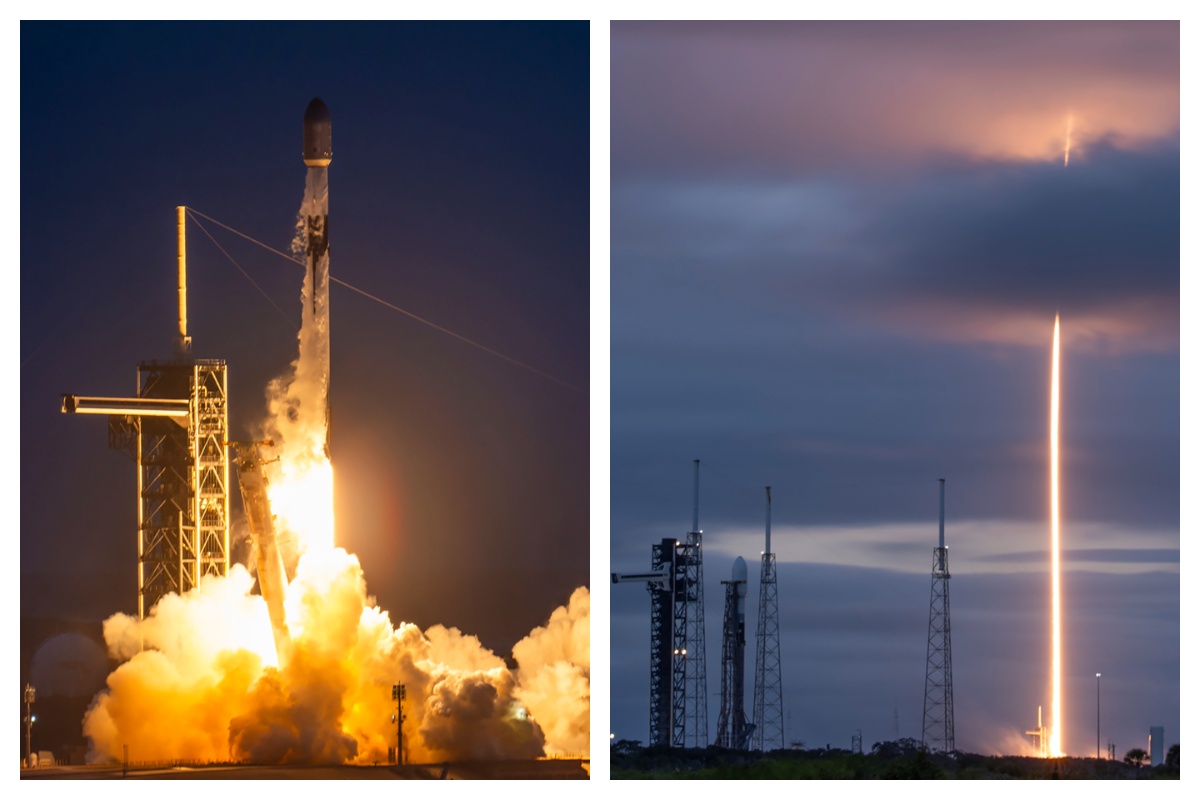
SpaceX reached an incredible milestone with its Starlink program with a launch last night, as the 3,000th satellite of the year was launched into low Earth orbit.
On Monday, SpaceX also achieved its 32nd flight with a single Falcon 9 rocket from NASA’s Kennedy Space Center.
The mission was Starlink 6-92, and it utilized the Falcon 9 B1067 for the 32nd time this year, the most-used Falcon booster. The flight delivered SpaceX’s 3000th Starlink satellite of the year, a massive achievement.
There were 29 Starlink satellites launched and deployed into LEO during this particular mission:
Falcon 9 launches 29 @Starlink satellites from Florida pic.twitter.com/utKrXjHzPN
— SpaceX (@SpaceX) December 9, 2025
SpaceX has a current goal of certifying its Falcon boosters for 40 missions apiece, according to Spaceflight Now.
The flight was the 350th orbital launch from the nearby SLC-40, and the 3,000 satellites that have been successfully launched this year continue to contribute to the company’s goal of having 12,000 satellites contributing to global internet coverage.
There are over five million users of Starlink, the latest data shows.
Following the launch and stage separation, the Falcon 9 booster completed its mission with a perfect landing on the ‘Just Read the Instructions’ droneship.
The mission was the 575th overall Falcon 9 launch, highlighting SpaceX’s operational tempo, which continues to be accelerated. The company averages two missions per week, and underscores CEO Elon Musk’s vision of a multi-planetary future, where reliable connectivity is crucial for remote work, education, and emergency response.
As Starlink expands and works toward that elusive and crucial 12,000 satellite goal, missions like 6-92 pave the way for innovations in telecommunications and enable more internet access to people across the globe.
With regulatory approvals in over 100 countries and millions of current subscribers, SpaceX continues to democratize space, proving that reusability is not just feasible, but it’s also revolutionary.
